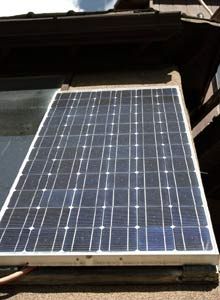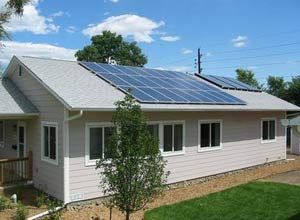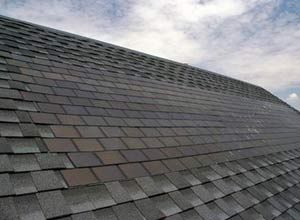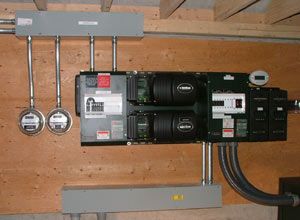By Dan Fink
Not too far back in the past, only wildland firefighters would ever expect to see solar electric panels on roofs and in yards during an incident. Such power systems were almost exclusively installed by folks living in remote, rural homes and cabins, and wildland firefighting doesn’t usually include entering burning structures, ventilating roofs or saving homes already engulfed in flames. These systems were always used to charge banks of batteries in the home, and ran on 12, 24 or 48 volts DC.
Today the renewable energy landscape has changed significantly, and urban firefighters are just as likely to encounter solar power systems as their rural brethren. Indeed, most of the renewable energy market these days is geared towards “grid-tied” systems where the homeowner sells electricity to the utility when there’s extra being produced. And, these new systems don’t run at benign car battery voltage anymore, but are pumping power at up to 600 volts DC whenever the sun is shining!
It’s extremely important for firefighters and their commanders to be able to identify homes with solar electric (photovoltaic or “PV”) systems and understand how these systems work.
Much inaccurate information about PV and firefighter safety has been published on the Internet recently, even to the point of recommendations to “let it burn” if solar panels are spotted on a roof. As a firefighter and renewable energy consultant, I hope to set the record straight.
The basic issues
- Flat panels on roofs, poles and racks are not always electrical. They could be providing room lighting, hot air, hot water or electricity, and multiple types of panel could be combined in one installation.
- If there is a solar electric system involved, “pulling the meter” will only kill power coming in from the utility grid. Other circuits may remain live — household circuits if the system has battery backup or an auto-start gasoline generator, and PV circuits whenever the sun is shining. Multiple disconnects for various parts of the system are very common.
- A Hot Stick will not detect live DC voltage; these work only with AC.
- Roof access may be limited by solar panels of any type (see photo 1 below). While some areas have local ordinances requiring setbacks and pathways, others do not or the system may have been grandfathered in. The roof areas on which you can walk or cut into for ventilation may be very limited. Putting a foot or ventilation saw into a 600 volt DC solar array during daylight hours is dangerous!

Photo courtesy DOE/NREL
An example of limited roof access. Such an installation would not meet code in some areas. (Photo 1) - Roof-mounted systems of any type are fragile, and will not support the weight of firefighters or equipment. They are also very expensive, and damage should be avoided if possible during unknown or minor incidents, such as a possible chimney fire.
- Renewable energy system components and disconnects may not be properly labeled, or you may not be familiar with what the labels mean.
- Large backup battery banks (see photo 2 below) may or may not be included, and can pose chemical hazards (sulphuric acid), explosion hazards (hydrogen gas) and electrical hazards (powering household circuits even after you pulled the main meter).

Photo Northern Arizona Wind and Sun
A large battery bank, used to power a home during a utility grid blackout. (Photo 2)
Safety procedures
(for when you spot “funny-looking objects” on a roof or in a basement)
Of course each department must develop its own SOPs for responding to homes with PV systems (I hope not “Let it burn!”). This article is only here to give you some suggestions about factors to consider.
- Identify the system, if possible. Is it pushing only natural light (photo 3), hot air (photo 4), hot water (photo 5), electricity (photo 6), or a combination (photo 7)?

Photo Solatube
A solar tube skylight. (Photo 3)
Photo The Alternative Energy Store
A solar air heating panel. (Photo 4)
Photo The Radiant Floor Company
Two types of solar hot water heating panels (Photo 5)
Photo Dan Fink
Typical solar electric panel (photovoltaic, or “PV”). (Photo 6)
Photo courtesy DOE/NREL
The panels at upper right are for hot water, the ones on the left make electricity. (Photo 7)Only solar electric systems pose significant firefighter hazards, but note that “solar shingles” may be hard to spot (photo 8). Lots of pipes and a few thin wires (photo 9) indicate a solar hot water or hot air system with low-power electrical controls. Wires in conduit with no pipes indicate solar electric.

Photo courtesy DOE/NREL
‘Solar Shingles’ may be nearly invisible on the roof. (Photo 8)
Photo Peak to Prairie Home Inspection Service
A typical solar hot water system control center. (Photo 9) - Locate the central electrical system control panel (photo 10) if you need to disconnect circuits. All renewable energy systems are controlled from a central point. There may be other breakers that disconnect individual parts of the system, but these could be located outdoors or on the roof. Battery banks are always located near this control point, and may be the cause of smoke or a smoke smell in the first place.

Photo Rochester Solar Technologies
A typical solar electric system control center. (Photo 10) - Assume every electrical circuit is live, even if you have pulled the main meter and shut off visible breakers. When the sun is shining, dangerous DC voltage is still being generated in the PV panels. The only way to eliminate this is to cover all panels with an opaque tarp. Note that scene lighting is not powerful enough to generate dangerous voltage from a PV array, but lightning may be. If the home has battery backup, household AC circuits may be live at any time.
- Do not step on or cut into PV panels during roof ventilation, especially during daylight — find another place to ventilate if possible, or change your attack strategy. After dark, only non-lethal battery voltage may still be present in wires leading to panels, and indeed anywhere in the system (if you did not locate the proper breakers to stop it).
- Watch for changing conditions — for example, during salvage operations after dark, wires damaged during an attic fire may become live as sun hits the PV panels in the morning, and their melted insulation could make metal conduit live too.
- Many renewable energy system installers now keep a 24/7/365 emergency contact number, so incident commanders can get a technician on scene ASAP to disconnect circuits if needed.
Conclusion
I hope I’ve been able to explain enough about renewable energy systems here to help keep firefighters safe, and to help departments develop training programs and SOPs. My entire training document on the topic is available for official use here.
Dan Fink has been a firefighter for the Rist Canyon Volunteer Fire Department in Larimer County, Colorado, for 10 years, and has lived off-grid in a remote corner of their response area for 18 years, 11 miles from the nearest utility electric or phone line. He has been certified for wildland and structural firefighting, with a BA in Technical Journalism from Colorado State University. Dan is a renewable energy consultant and educator with 15 years experience, and his articles and photographs frequently appear in such magazines as Home Power, Back Home, the Energy Self Sufficiency Newsletter, and Lighting Today. He is an on-call “Ask the Experts” columnist for Home Power Magazine and is co-author of the book “Homebrew Wind Power.” For details on solar safety as well as presentations he offers, which feature a question and answer session and local site visits, contact Dan at danbob@otherpower.com.

